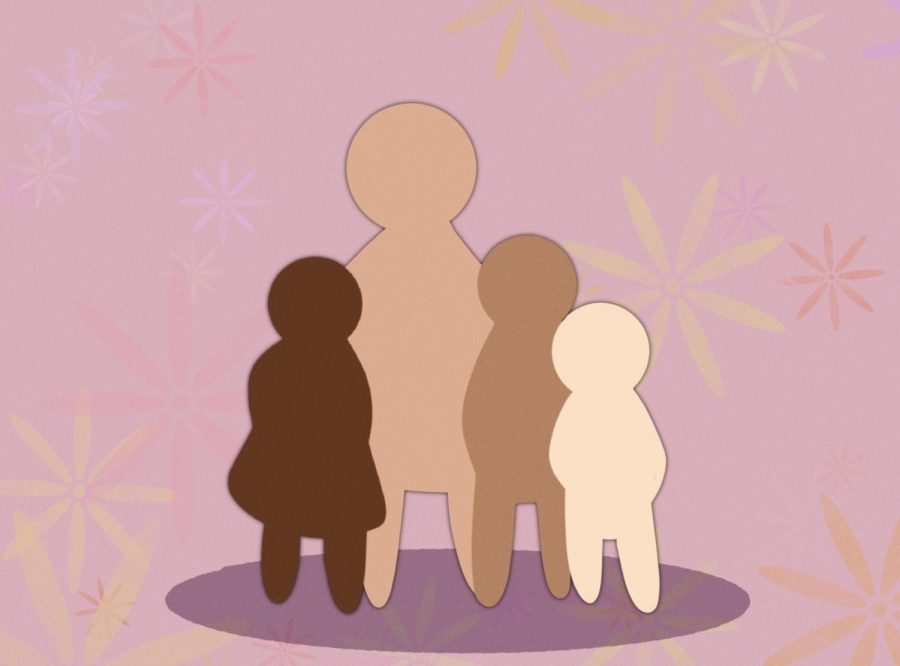Guest Column: Mythbusting Foster Care Stereotypes
Guest writers debunk media stereotypes regarding foster care, adoption
The media perpetuates many myths and stereotypes about the foster system, and three students are working to debunk them.
December 8, 2022
Editor’s note: Guest columnists Gemma Delgado, Kaylee Wolfington and Mia Kankelberg reached out to publish this column in the Evergreen as part of their final project for English 325; they selected a social issue and put together a research-based political action project to do something about it.
The media perpetuates so many stereotypes about the foster care system, orphanages and adoption; think of tragic orphans like Oliver Twist and dark, uncaring orphanges run by staunch Catholic nuns.
In reality, however, the goal of the foster system is to reunite children with their families, and foster homes can be very loving and beneficial for children who need it.
We have set out to change people’s perceptions of the system, and will be debunking eight of the most common myths about the system.
1. Adoption facilities are dark, scary places
Orphanages and adoption facilities are often painted as dark, scary, horror-movie worthy places. However, there are many individuals who work hard to make this untrue.
For example, children are often first placed with a relative if possible before a stranger. Next children are placed in different foster homes with frequent checks by social workers and sometimes are placed in group homes if there is limited availability.
2. Kids who get adopted feel unwanted or unloved.
Though it does happen, not every kid who gets adopted feels like they are unwanted or unloved. Though these feelings are valid and do happen, it sends the message that those who are adopted are “harder to love.”
Kids who have been adopted or are in foster care need media material that makes them feel better about themselves instead of making them feel unwanted or ignored.
The best way to support foster care children as a foster parent is to offer them a safe space and room to make mistakes without feeling like they are going to be sent away. As a classmate or friend, one can try to stay in contact with the foster child when they are relocated so they can have a support system.
3. Foster kids are all placed with foster parents.
There are usually around 424,000 kids in foster care, though this number has been rising. In 2019, of the 64,000 kids that were adopted, 36% were adopted by a relative.
There is a common misconception that all foster kids must not have relatives or next of kin that can house them, and are relying only on foster homes of parents to take them in. However, there are many children in the system who get placed with relatives when those relatives can take them.
The goal of foster care is reunification with the child’s birth parents. This is why there are so many children ‘in the system’ or who have not been adopted, because their parents still have rights to their children and they are not available to be adopted.
4. Media representation of the foster care system, adoption processes, or kids in those systems is accurate.
Media has been a driving force in the way U.S. society views these systems, and has interfered in adoption cases, affecting their outcomes, the families, and the children.
Many television writers or journalists do not have personal ties to foster care children or adopted children and haven’t seen it from a personal lens.
Also, media exists for entertainment, so the purpose of what they express in a plot or an article is not necessarily to inform and tell the truth about the realities of foster care.
5. People only foster children for extra cash.
Although this is unfortunately true in some cases, this is not the reasoning behind every foster parent.
A stipend is given to the foster parents and that is based on the cost of where the state is and how much the cost of raising a child is, but this amount of money does not cover every cost the child has, if the foster parent is taking care of them well.
Often, foster parents pay a lot of additional money out of their own pockets to love and care for foster children on top of the stipend afforded to them.
6. Teenagers are the most difficult to foster.
Media loves to portray teenagers as the hardest kids to foster or even as dangerous and rebellious. This is an unfair label because each teenager has their own unique skills and strengths.
One of the reasons teenagers may feel this way is because of the instability they have faced and the lack of love and care. Moving around from different foster homes and to different schools for a long time is very hard on children, including teenagers.
The foster care system needs more foster parents who are willing to accept teenagers and teach them the skills they need to learn how to be an adult, as well as give them the space to experience latent childhood feelings and emotions.
7. That foster child cannot do normal things.
With a positive environment and healthy relationships, foster children can do anything that normal children can. This includes joining sports teams, going to daycare, going on vacations and going to school.
Foster care does have extra rules to keep children safe, however.
For example, foster parents can bring foster children on vacation with their family, but they need state permission to leave the state with the foster children. Children in foster care also can only be left in the care of state-certified childcare providers.
8. That foster kids are unfixable
Foster children are not broken.
They are individual people who have been through a lot of hard things. They are children, who have been forced to deal with many stressful things and to live with people they often do not know.
The process of foster care can be traumatic, but it is necessary to keep children safe from unhealthy environments.















